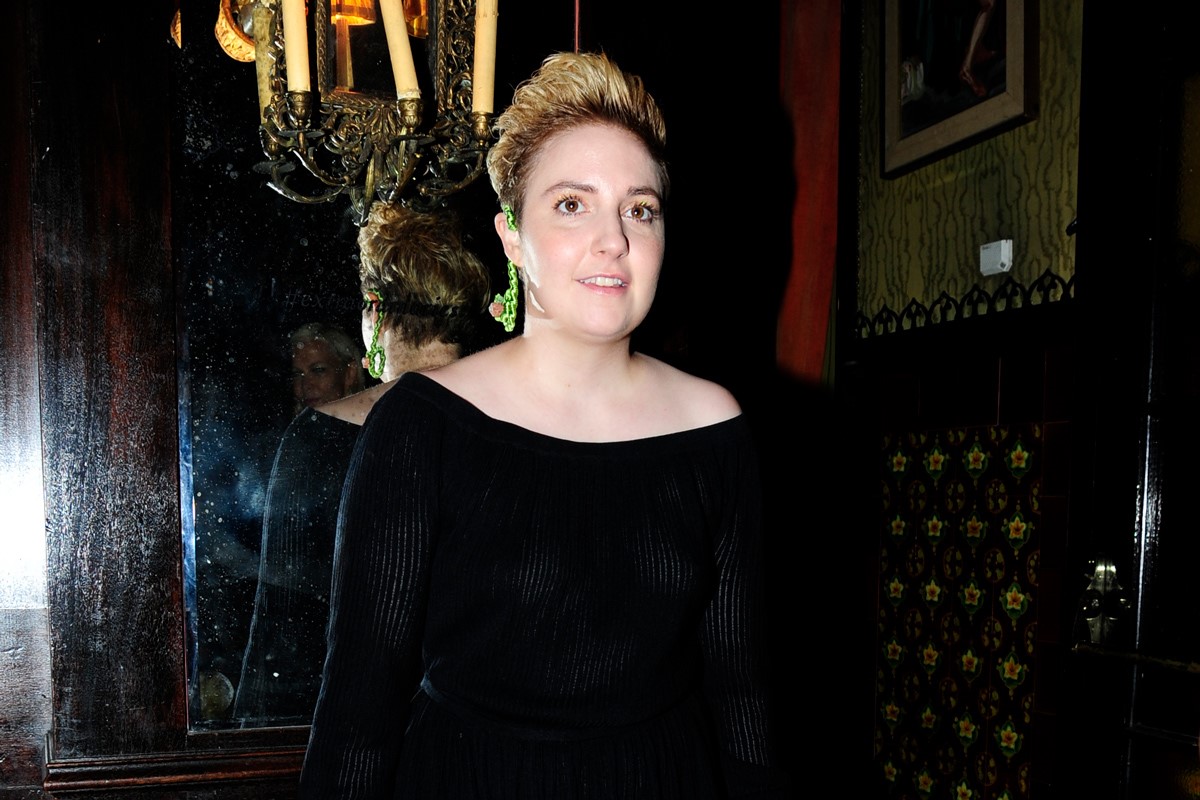Why 'Girls' Actor Lena Dunham Needed a Hysterectomy at 31

Actress Lena Dunham has revealed that she recently underwent a hysterectomy to treat crippling pain from endometriosis.
In an essay published in Vogue this week, Dunham (age 31) detailed her decision to have the uterus-removing surgery after a decade-long battle with endometriosis, a condition in which the tissue that lines the inside of the uterus (called the endometrium) grows outside of the uterus, causing severe pain around the time of menstruation.
Dunham wrote that even though she wanted children, "I just sense that the uterus I have been given is defective." The "Girls" star had previously had eight surgeries in attempts to treat the condition, including a surgery last April, which she initially thought had cured her symptoms. But her symptoms returned in August, and Dunham became "delirious" with pain. She later checked herself into the hospital and made the decision to have the procedure to remove her uterus and cervix. [10 Celebrities with Chronic Illnesses]
A hysterectomy, or a surgery to remove the uterus, might seem to get to the source of endometriosis pain. But removing the uterus — endometrium included — isn't a surefire way to cure the condition, experts told Live Science.
A hysterectomy for endometriosis is considered a last resort and fairly extreme treatment, said Dr. Metee Comkornruecha, director of adolescent medicine at Nicklaus Children's Hospital in Miami, who is not involved in Dunham's case. But, "for some women, it may make sense," he said.
However — and perhaps surprisingly — a hysterectomy is not a sure cure for the condition. That's because the lining of the uterus may remain in other parts of the body, such as the abdominal cavity, Comkornruecha told Live Science. If this extra lining is missed and not removed during surgery, then the pain symptoms may not go away.
According to the University of Michigan, removing the uterus and ovaries usually provides pain relief from endometriosis, but the relief doesn't always last — in 15 out of 100 women, pain symptoms return after surgery. And for women who don't have their ovaries removed, as was the case for Dunham, the chances of lifelong pain relief are lower. According to a 2014 review paper, about 62 percent of women who have a hysterectomy for endometriosis, but who don't have their ovaries removed, experience a recurrence of their symptoms.
Sign up for the Live Science daily newsletter now
Get the world’s most fascinating discoveries delivered straight to your inbox.
In these cases, symptoms may come back because the ovaries produce estrogen, which is involved in regulating the menstrual cycle, Comkornruecha said. In other words, displaced uterine tissue that remains after surgery will still receive the signals to thicken and bleed around the time of menstruation, even though the tissue has no way to exit the body.
Other treatments for endometriosis include pain medications, hormonal therapy (including birth control pills) and surgery to remove uterine tissue in the abdominal cavity, Comkornruecha said.
Doctors may recommend a hysterectomy for endometriosis for the following reasons: a woman has severe symptoms; she is not close to going through menopause; she doesn't plan to become pregnant; or she has tried hormones and other surgeries to remove endometrial tissue, but her symptoms are still severe, according to the University of Michigan.
Dunham wrote that after doctors removed her uterus, they saw that her condition was even worse than they thought.
Her uterus was "full of both subtle and glaring flaws," Dunham said. "In addition to endometrial disease … I have had retrograde bleeding, a.k.a. my period running in reverse, so that my stomach is full of blood. My ovary has settled in on the muscles around the sacral nerves in my back that allow us to walk."
Dunham said she plans to explore her options to have children, through either in vitro fertilization (IVF) or adoption.
"I may have felt choiceless before, but I know I have choices now," Dunham said. "Soon I'll start exploring whether my ovaries, which remain someplace inside me in that vast cavern of organs and scar tissue, have eggs. … Adoption is a thrilling truth I'll pursue with all my might."
Original article on Live Science.

Rachael is a Live Science contributor, and was a former channel editor and senior writer for Live Science between 2010 and 2022. She has a master's degree in journalism from New York University's Science, Health and Environmental Reporting Program. She also holds a B.S. in molecular biology and an M.S. in biology from the University of California, San Diego. Her work has appeared in Scienceline, The Washington Post and Scientific American.










